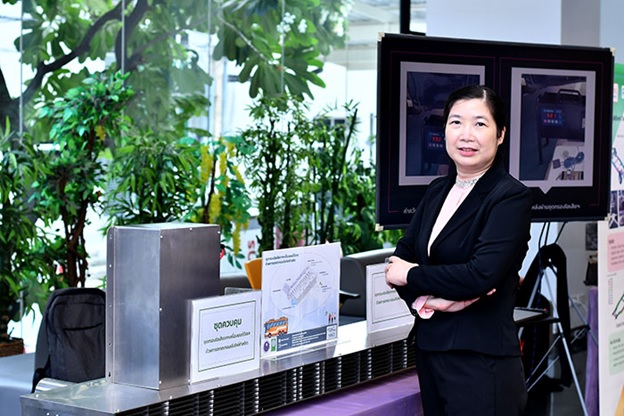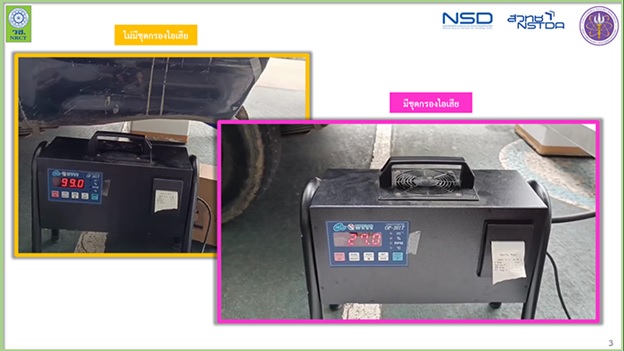PM2.5 is fine particulate matter that remains suspended in the air for extended period, causing air pollution. In recent years, PM2.5 pollution has become escalating in Thailand. At elevated level, PM2.5 can harm both human health and the environment. A major source of PM2.5 pollutants is diesel vehicle emissions.
The National Security and Dual-Use Technology Center (NSD) of NSTDA has previously developed an electrostatic precipitator (ESP) air purifier. An electrostatic precipitator (ESP) is a device that uses static electricity, instead of filters, to remove fine particles from a gas stream.
An ESP has multiple advantages over other types of filtration technology. It has high removal efficiency, even for microparticles. Because it is filter-less, there is no filter barrier to resist airflow, thus can handle large gas volumes, and no requirement for replacing filters.
Armed with the knowledge and experience, NSD embarked on the development of an ESP device for removing diesel engine particulate matter.

Dr. Pornanong Pongpaibool, Research of NSD, revealed the process of developing this apparatus. The velocity of exhaust gases is normally around 30 m/s. This high velocity negatively affects the ESP performance, resulting in only 10-20% removal efficiency. To overcome this problem, the device was designed with an air diffuser to distribute the airflow and reduce the gas velocity entering the equipment. This design was proven to achieve high removal efficiency.

Dr. Pornanong further presented the performance of this device when tested with a diesel pickup truck. At the maximum speed, the level of black smoke emissions was 99%. With the ESP device, the emissions level went down to 27%, meeting the new emission standard capped at 30%.
In addition to its high performance, this ESP device is durable and easy to clean with water as it is made entirely from stainless steel. After cleaning, if water residue is still present inside the device, moisture will be detected by the built-in control unit and the ESP device will not activate.
The research team is currently collaborating with Panus Assembly Company Limited testing the device performance with an array of large vehicles including multiple types of trucks and buses.
Dr. Pornanong concluded that this ESP device allows PM2.5 to be captured at source, thus reducing air pollution, and minimizing the risk to human health.
